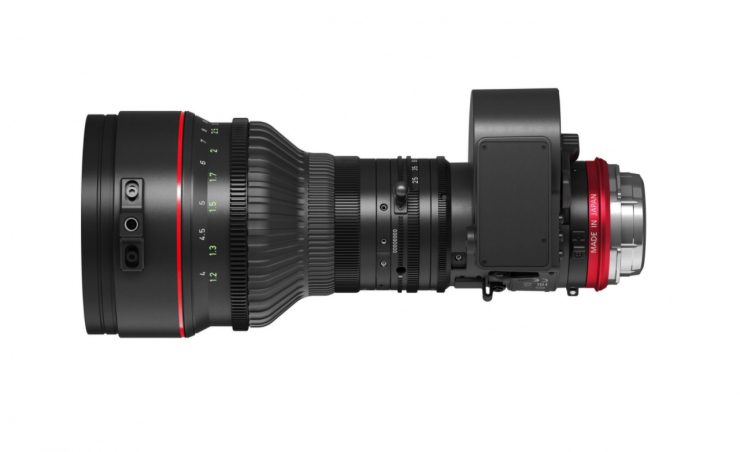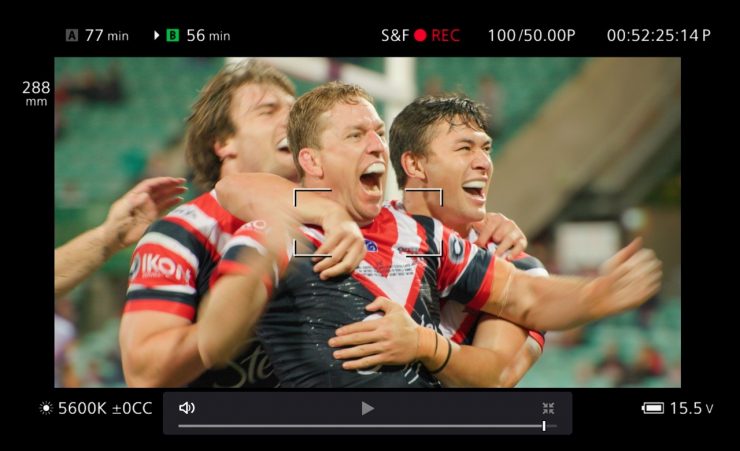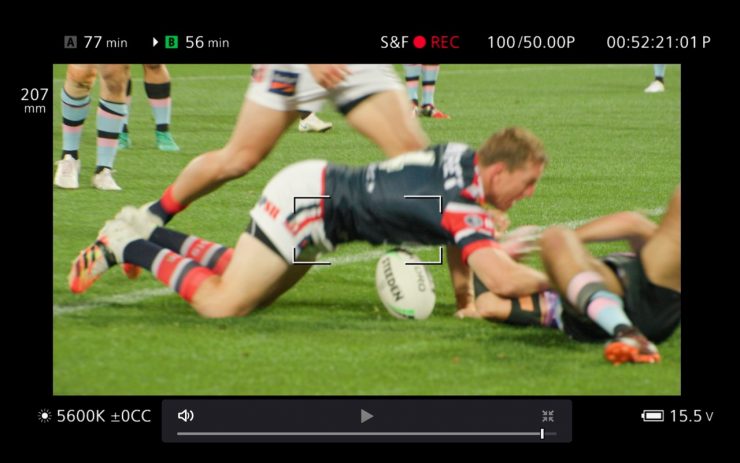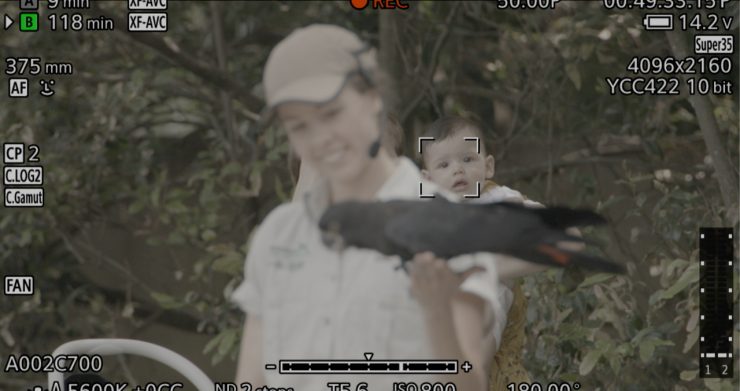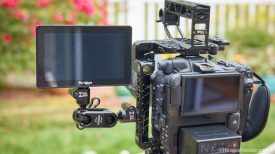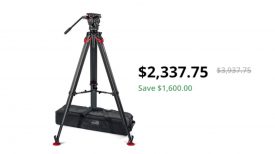
One of our long-time readers, Ben Fogarty, got a chance to extensively test out the new Canon CINE-SERVO 25-250mm T2.95 Cinema Zoom which hasn’t started shipping yet in a lot of places in the world. In Australia, you can purchase it and it has been shipping since July.
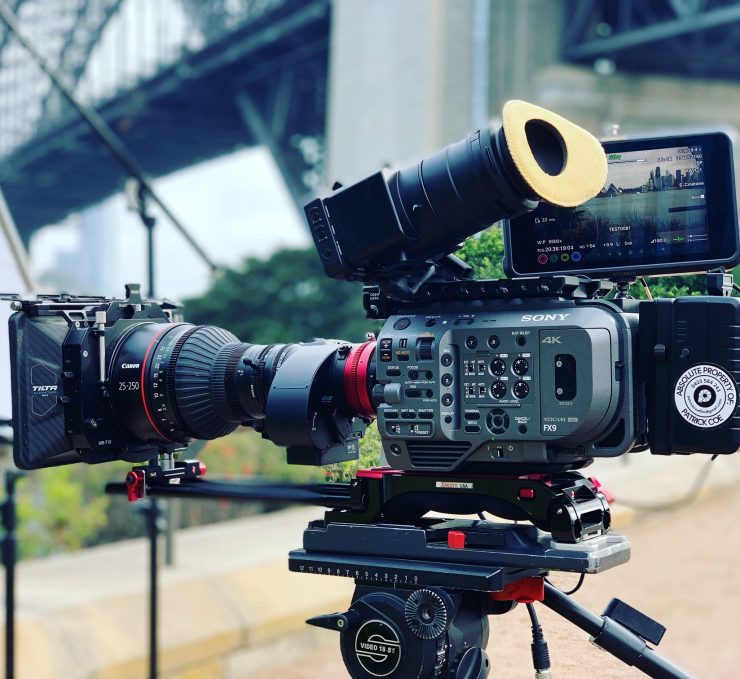
Ben wanted to try the lens out on a variety of cameras, including the Sony FX9, Canon C300 Mark III, and Canon C500 Mark II. He was also curious to see how well the autofocus performed as well as how it covered certain sensors at various resolutions.
Further down in the article you can read an extensive Q&A I did with Ben and see example videos that were shot using the lens. Before we jump into that, let’s check the lens out.
If you are not familiar with the lens, Canon designed the 25-250mm with versatility in mind, so that it could be used used for wildlife, documentary, broadcast, and cinema applications.
CINE-SERVO Trinity
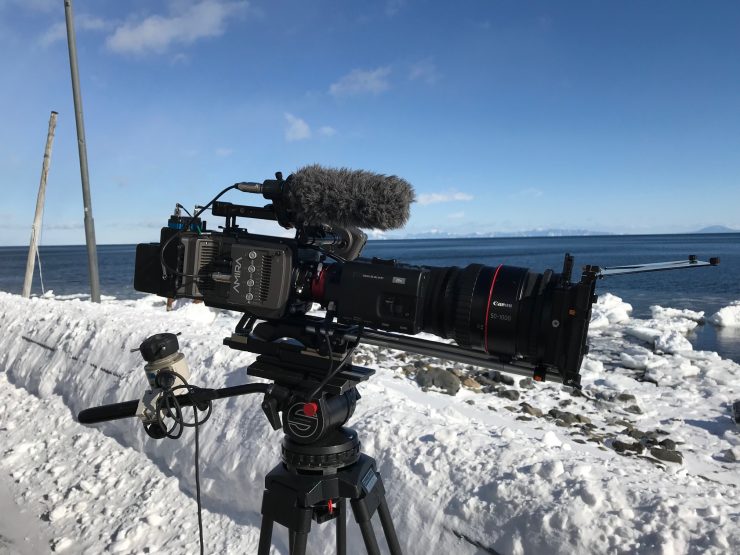
The CINE-SERVO 25-250mm T2.95-3.9 covers S35 sized sensors and it slots in between the existing CN7x17 KAS S Cine-Servo 17-120mm T2.95 and the CINE-SERVO 50-1000mm T5.0-8.9.
Canon now has three CINE-SERVO zooms that cover a range from 17mm out to a whopping 1500mm (if you engage the 1.5x extender on the 50-1000mm).
Variable Aperture
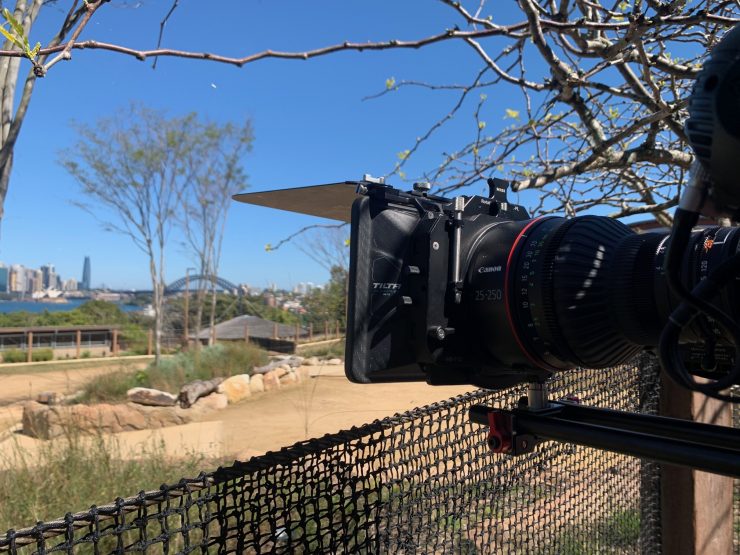
The lens doesn’t have a constant aperture like the Angenieux Optimo Style 25-250mm T3.5. The Canon 25-250mm has a variable aperture that goes from T2.95-T3.9. This is not a massive ramp in the aperture. If Canon had of given the lens a constant aperture it would have made it significantly larger and heavier.
The lens remains at T2.95 from 25-187mm and then it starts ramping up to T3.9 from there. It is unclear at this stage how linear that ramp is. Still, having a constant T2.95 aperture between 25-187mm is impressive.
So how does the Canon compare to the aperture ranges of other cine zooms with similar focal lengths? Below you can see:
| T-stop Range | |
| Canon CINE-SERVO 25-250mm T2.95-3.9 | T2.95-3.9 |
| Angenieux Optimo Style 25-250mm T3.5 | T3.5 |
| Fujinon ZK 25-300mm T3.5 to T3.85 Cabrio Premier | T3.5-3.85 |
| Canon CN-E 30-300mm T2.95-3.7 L S | T2.95-3.7 |
Optical Design & Features
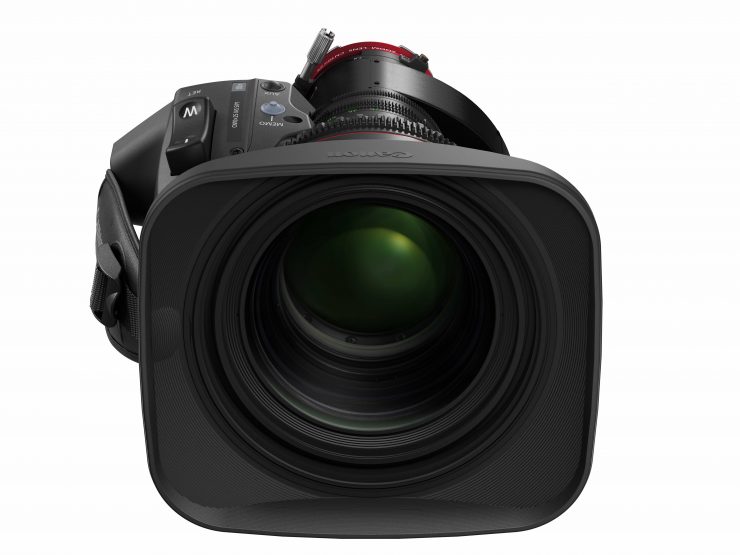
Canon used a lot of the same technologies they came up with when they designed the 50-1000mm. The optical design and mechanics for the 25-250mm can be directly traced back to the 50-1000mm.
The 25-250mm uses an 11 blade iris which is exactly the same as both the CN7x17 KAS S Cine-Servo 17-120mm and Canon Cine-Servo 50-1000mm.
Just like its siblings, it features the same 180° of focus rotation for precise focus pulls and is marked in both feet and meters. This makes it a lot easier to pull focus manually than using a lens with 300 degrees of rotation.
The 25-250mm has a close focus ability of 4′ (121.9 cm). This is exactly the same minimum focusing distance of the Angenieux Optimo Style 25-250mm T3.5.
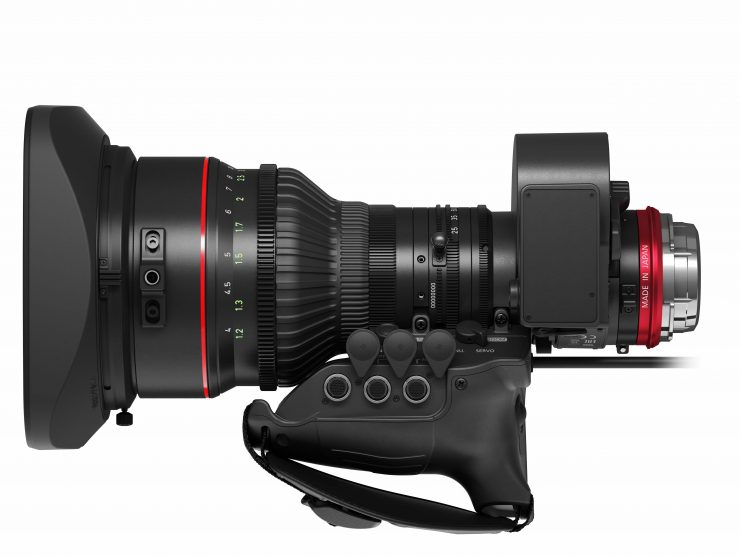
If you need to focus even closer, just like the 17-120mm, the 25-250mm lens also features a macro function.
The lens also features 0.8 MOD / 32 Pitch focus gears and 0.5 MOD / 51 Pitch gears on the iris and zoom. It has a Φ 114 mm front filter diameter.
The PL version of the lens supports Cooke/i Technology.
Lightweight
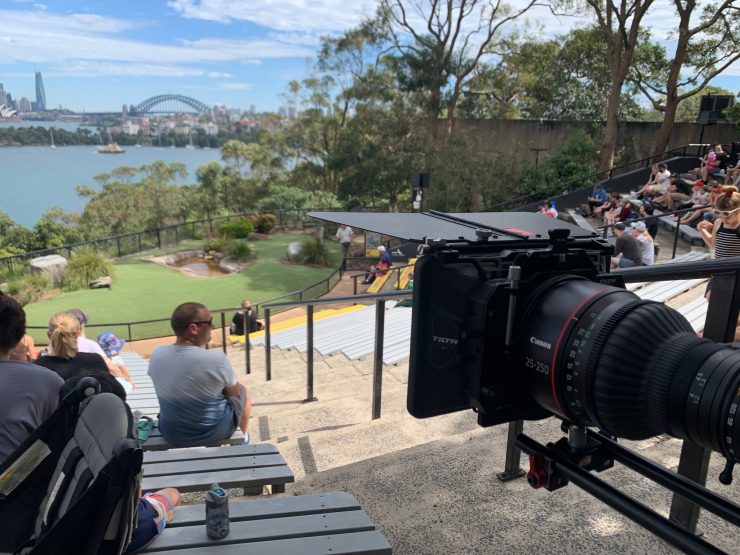
You wouldn’t normally classify a lens that weighs in at 6.7 lb (3 kg) as lightweight, but considering what other 25-250mm or similar range cine zoom lenses weigh, it is exceptionally light.
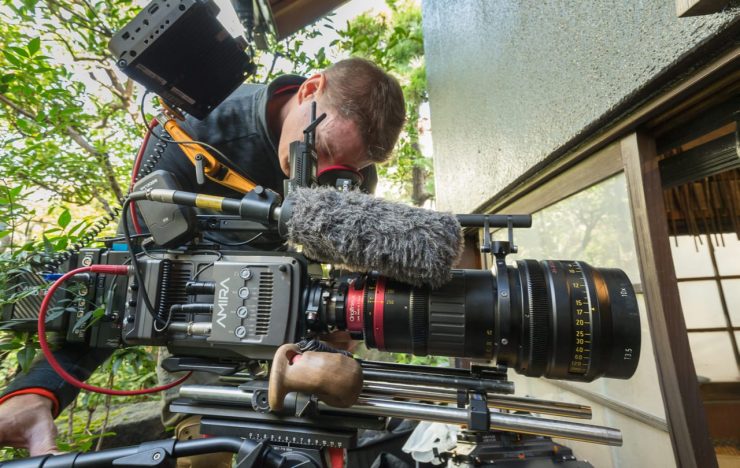
The lens is also only 11.1″ (28.2 cm) long. That makes it 3.85″ (9.78 cm) shorter than the Angenieux Optimo Style 25-250mm T3.5.
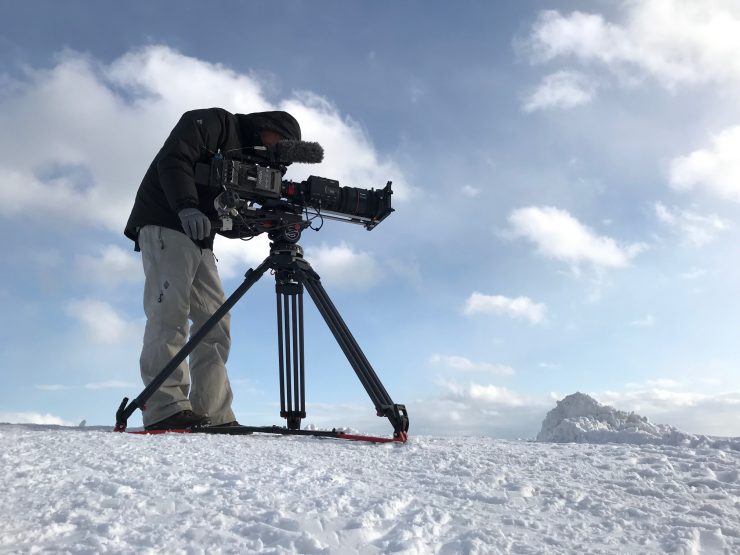
Canon took a lot of what they learned from creating the CINE-SERVO 50-1000mm T5.0-8.9 and applied it to the new CINE-SERVO 25-250mm T2.95-3.9. Making a 10x cine zoom that has T2.95-3.9 aperture and weighs under 7 lb is a real engineering feat.
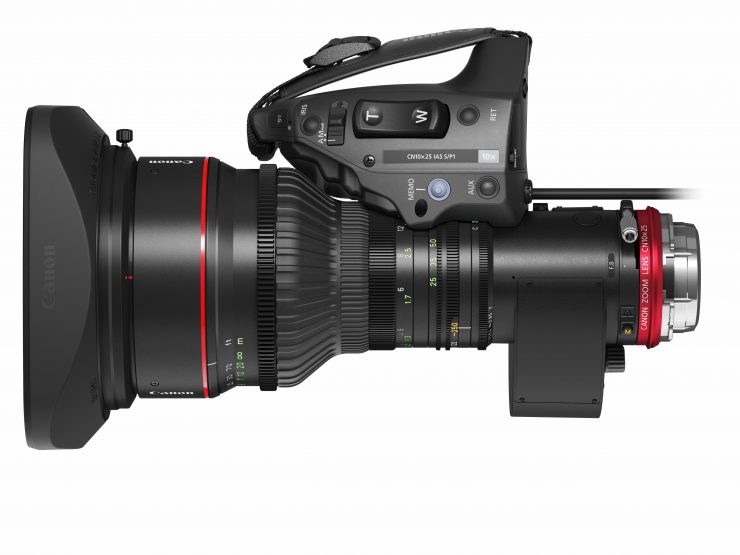
The digital drive unit can also be removed if you want to make the lens even lighter.
As a comparison, here is what a couple of other cine zoom lenses with similar focal ranges weigh:
| WEIGHT | |
| Canon CINE-SERVO 25-250mm T2.95-3.9 | 3 kg (6.7 lb) |
| Angenieux Optimo Style 25-250mm T3.5 | 7.3 kg (16 lb) |
| Fujinon ZK 25-300mm T3.5 to T3.85 Cabrio Premier | 8.9 kg (19.6 lb) |
| Canon CN-E 30-300mm T2.95-3.7 L S | 5.8 kg (12.8 lb) |
As you can see, the Canon CINE-SERVO 25-250mm is less than half the weight of the Angenieux Optimo Style 25-250mm T3.5 and almost a third of the weight of the Fujinon ZK 25-300mm T3.5 to T3.85 Cabrio Premier.
Built-in Extender
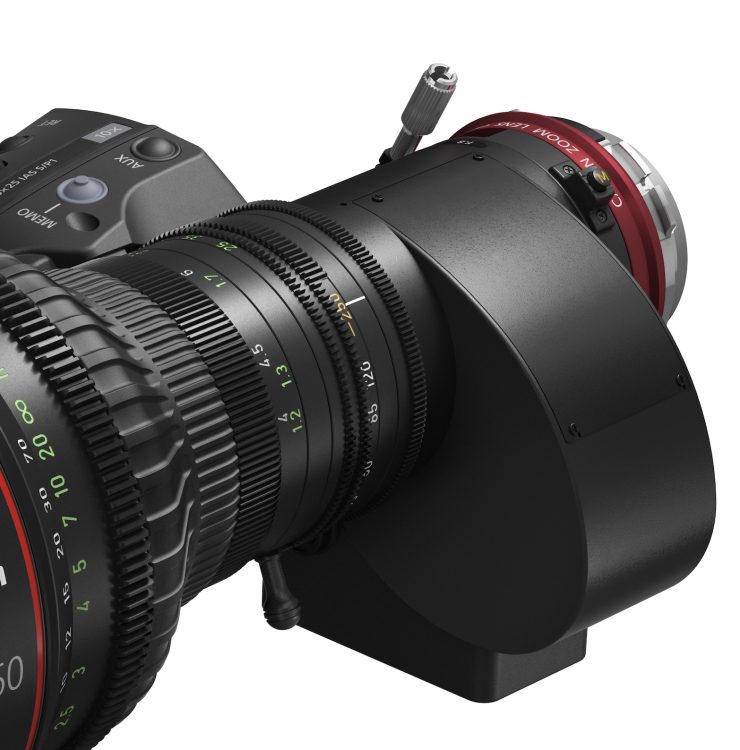
Just like the CINE-SERVO 50-1000mm T5.0-8.9, the 25-250mm features a built-in extender.
The extender on the 25-250mm is a 1.5x, which allows the user to change the focal range of the lens to 37.5-375mm. Of course, by doing this you will lose light and the lenses T-stop range changes to T4.4-T5.9.
Having a lens that can go out to 375mm at T5.9 is still impressive. With today’s modern digital cinema cameras having such good sensitivity, T5.9 is going to be more than usable in most situations.
By adding a 1.5x extender Canon has greatly increased the versatility of this lens.
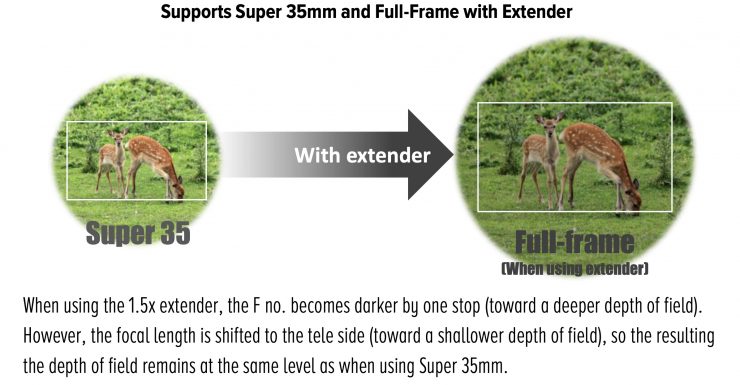
Even though the lens is only designed to cover S35 sensors if you activate the 1.5x extender the lens will actually cover full-frame sensors.
Servo Drive Unit
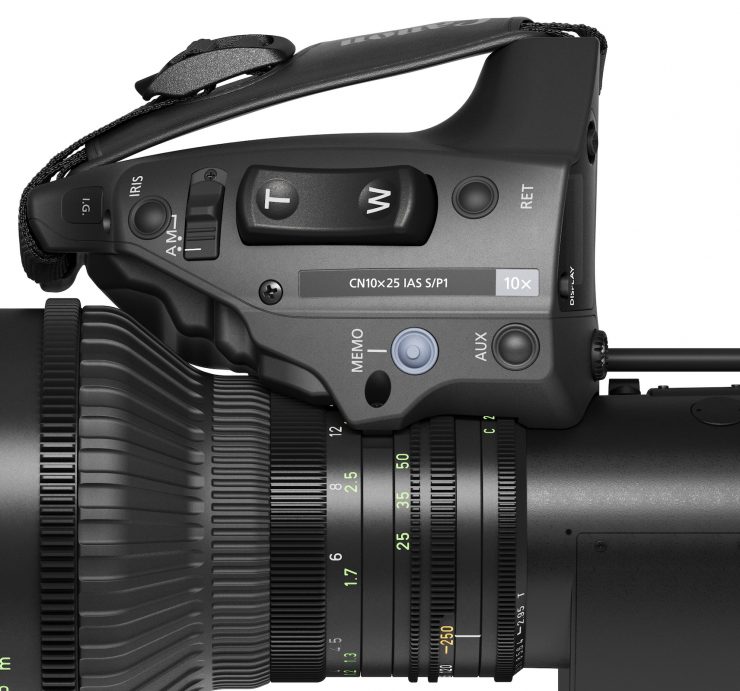
The detachable drive unit, can be removed and reattached with the zoom in any position, requiring no re-calibration. It also supports motorized zoom speeds ranging from 1.5 seconds to 180 seconds to zoom throughout the entire range. The zoom control includes a mini-LCD that displays zoom, focus, and iris setting. The lens mount supports electronic signal pass through, supporting EOS lens data management functions. The built-in, 12-pin connector allows you to interface this lens with standard broadcast connectors.
DPAF
If you use the EF mount version of the lens you can take advantage of Canon’s proprietary Dual Pixel CMOS AF.
No IS
Just like the 7×17 KAS S Cine-Servo 17-120mm and Canon Cine-Servo 50-1000mm, the 25-250mm doesn’t feature any IS.
As someone who uses the Cine-Servo 50-1000mm, I would have liked to have seen some sort of IS incorporated. With the 50-1000mm you really need to use a very heavy duty tripod, because the slightest amount of movement at 1000mm is very noticeable.
It will be interesting to see how well the 25-250mm works with the C500 Mark II and C300 Mark III as both of those cameras feature electronic image stabilization (EIS).
So, now that you know all about the lens, let’s find out what Ben Fogarty thought about using it.
What was the aim of this lens evaluation?
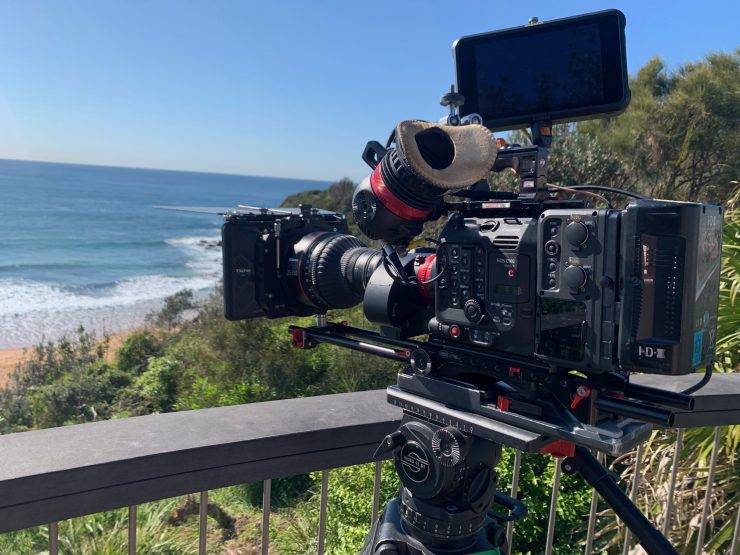
I wanted to try this lens out before I committed to purchasing one, I didn’t set out to do a big review, I ended up shooting and learning loads about this lens and thought I should share what I found. I am not an editor or colorist, so please forgive the less than polished look of my videos. I have a newfound respect for all the amazing reviews that guys do online and we all watch for free.
What is the appeal of the 25-250mm for the type of work that you do?
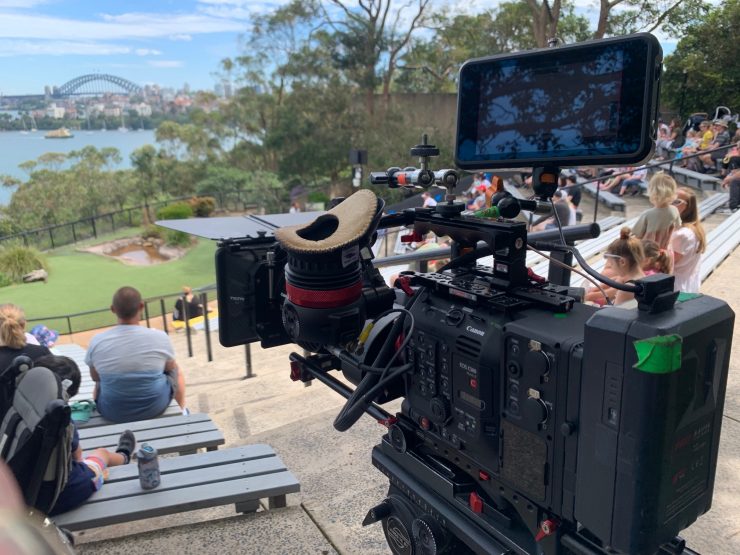
I film a lot of reality TV. Having a lens that potentially covers most situations is appealing. Currently, most reality TV is filmed with the Canon 17-120mm and the Cabrio 85-300mm as the long lens. The longer lens options are limited and most require tripods. The ability to keep the same lens on all day and move from shoulder to tripod without a lens swap is a big selling point for me. It means less chance of missing a shot and less wear and tear on gear. My 17-120mm may not get a lot of use anymore.
What are your impressions of the size and weight?
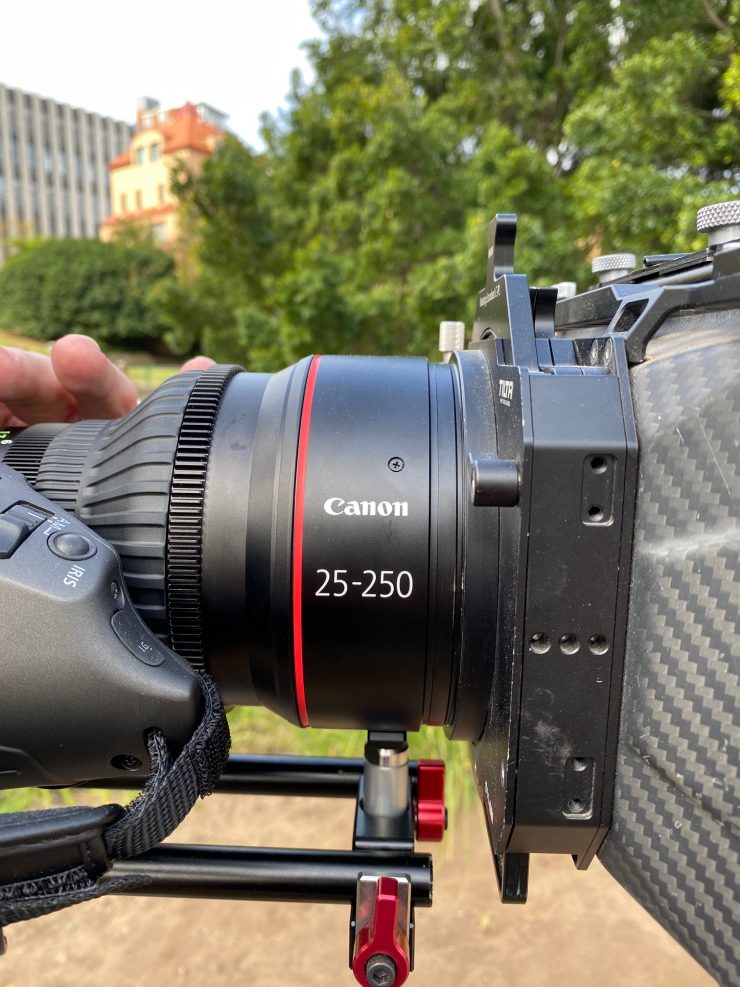
The 25-250mm fells just like the 17-120mm. I liked the balance off the shoulder when paired with the C500 Mark II. I would definitely use an easy rig but for a quick sequence, it’s more than manageable without a rig.
Is it a lens you can use on the shoulder?
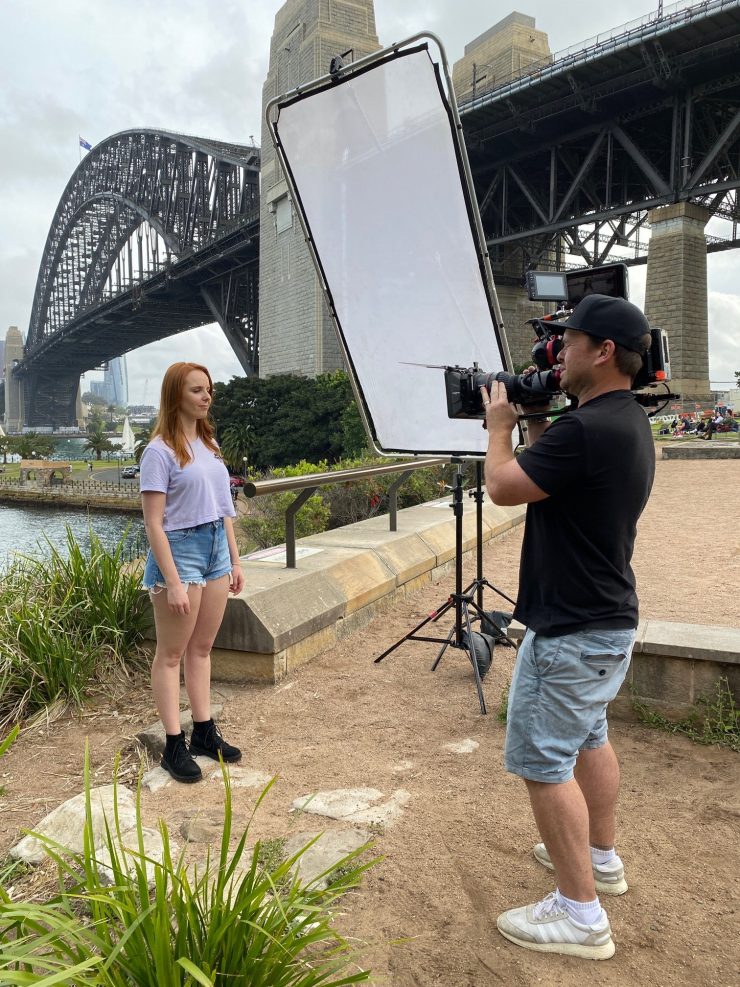
This lens is suited to shoulder work. It’s great to have some focal length back and it feels more like a 2/3 inch lens than a cinema lens. I’m so used to the 17-120mm that I forgot what it’s like to get able to get tight shots off the shoulder. 25mm is not wide enough for all situations, but as we know there is no perfect lens or camera.
The lens can take advantage of Canon’s DPAF. How did you find the autofocus when working with this lens?
I used continuous mode and face detection for all my tests. Face detection only works in 25-50p. There are loads of other settings and ways to adjust the DPAF with the touch screen. I chose continuous mode as I had an EVF on and didn’t want to keep looking up to adjust the settings. I found the autofocus a valuable tool; you just need to pick the time to use it.
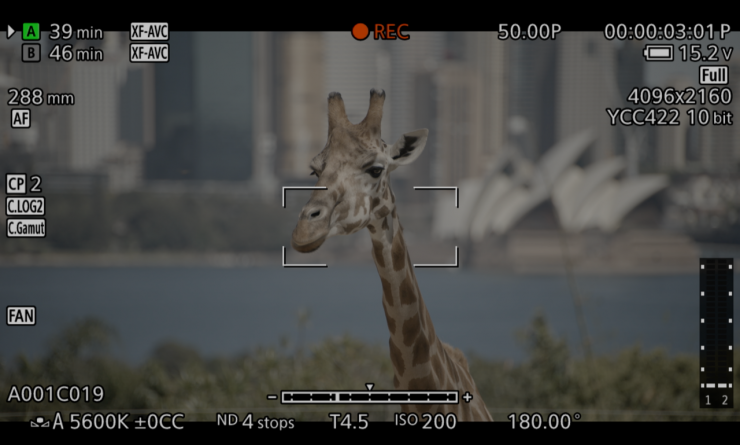
On a controlled shoot, it’s brilliant for talking heads, long interviews, to check focus, or a tricky shoot when the subject is walking towards the camera. It would be difficult to rely on if I only had one take or needed to nail a shot. I trust myself to find focus manually. DPAF comes into its own for many situations though.
How did you find the range?
The range of this lens is great however the drop-off is an issue. With the extender in the lens being T5.6 at 375mm I found myself not shooting wide open to avoid the drop-off.
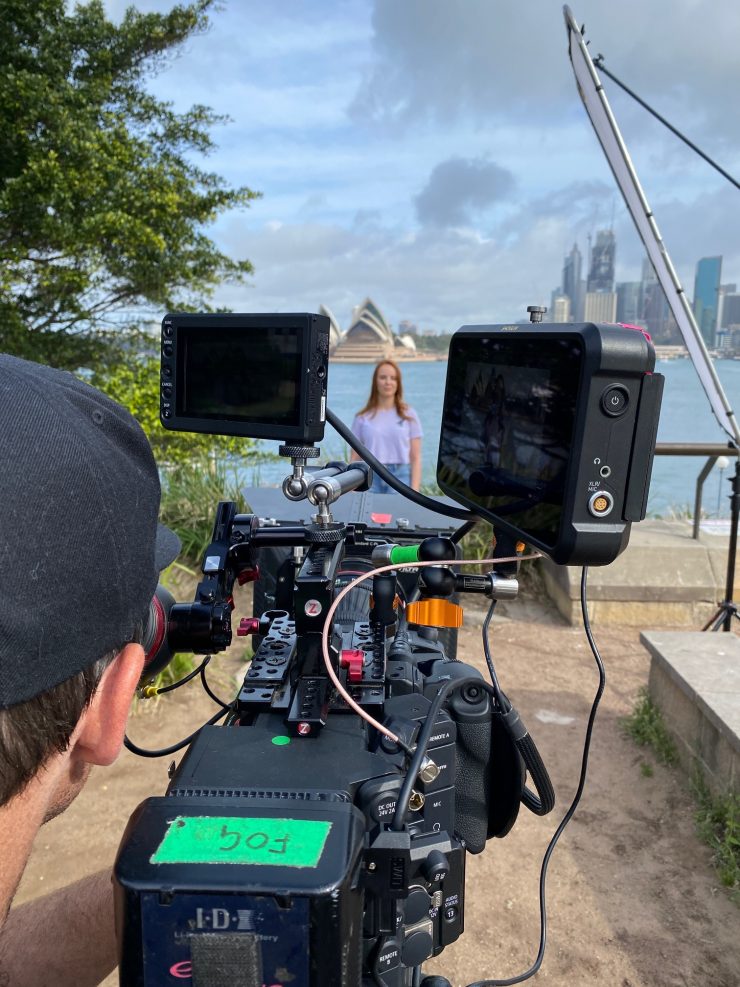
It’s great for outdoors but I do wonder if the T5.6 will be fast enough when shooting at night with a mix of other lenses. On a shoot with 8-10 cameras, we all try to match ISO, so if one camera was 2000 or more ISO higher it would be an issue for sure.
Do you think it is a decent focal range considering the size and weight compromises Canon had to make?
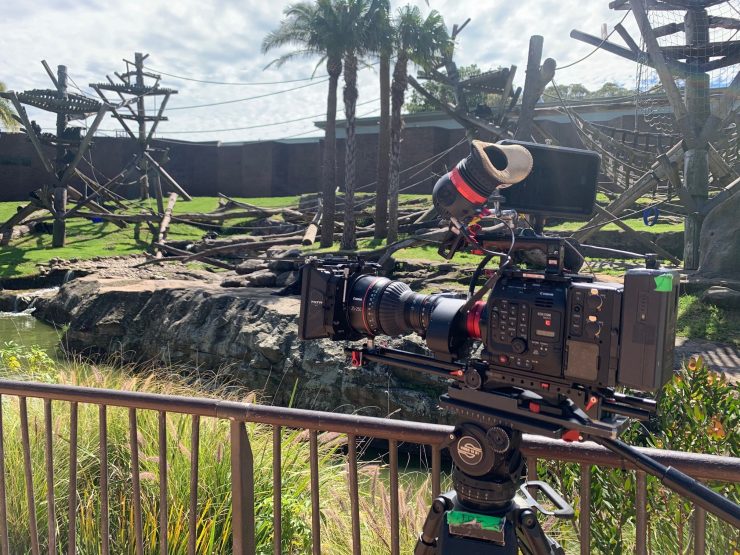
I think Canon got the mix right. They were never going to make a lens that meant we didn’t need the 17-120. I actually would have loved to see a longer lens, 100-400mm, and more constant aperture, but this is a very solid focal length for the size and weight.
How is the performance when you use the lens with the built-in extender?
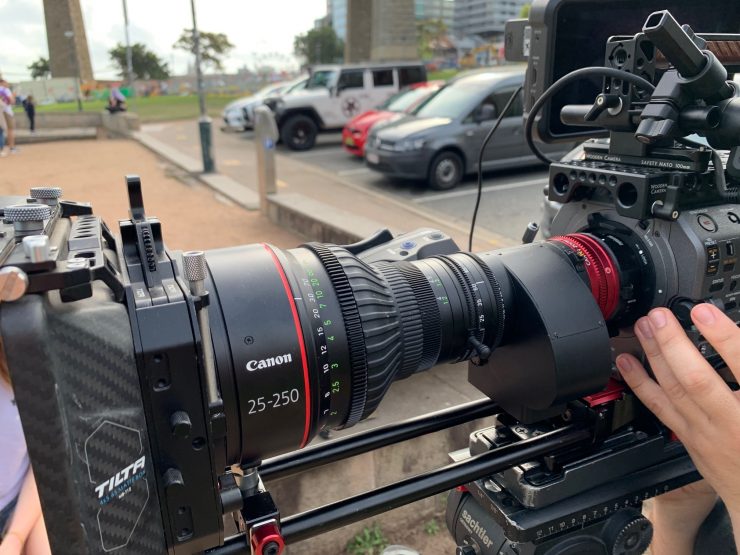
The extender performs like a 2/3 inch lens, a drop in light but very handy. DPAF seems to work in any mode I put the camera or lens in. I was very impressed and think it was a smart idea to get the lens to 375mm.
What did you shoot with the lens and what cameras did you use?
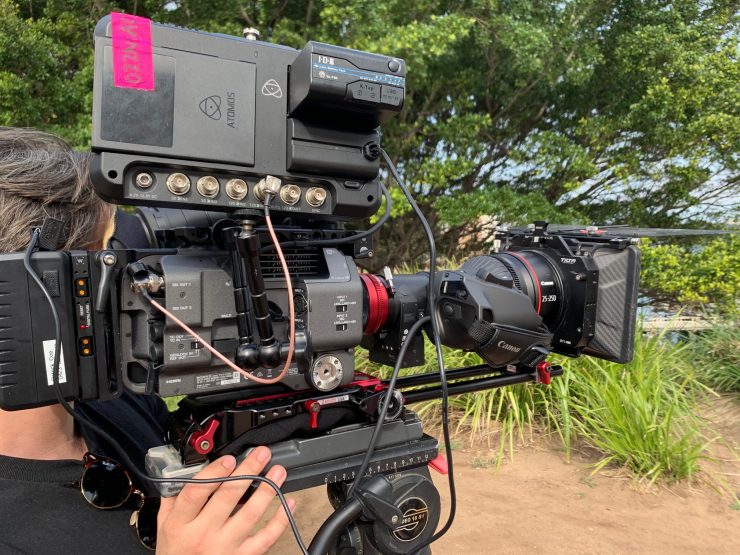
I used a C300 Mark III, C500 Mark II, and a Sony FX9. I picked these cameras for a few reasons. I wanted to see what this lens covered in some of the different sensor modes. I also wanted to test the latest cameras on the market.
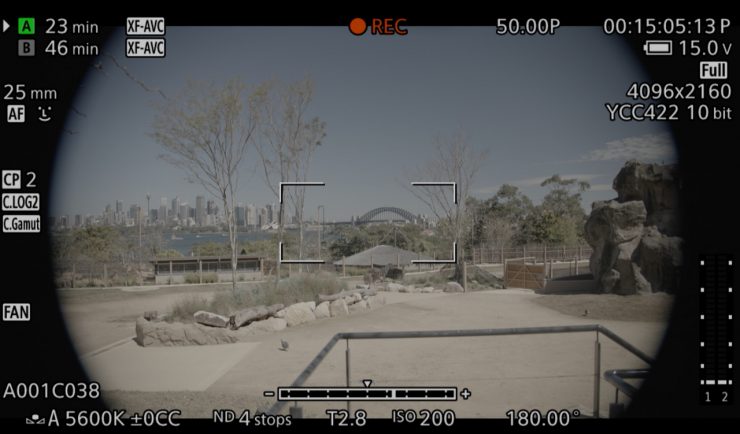

No extender used with the C500 Mark II 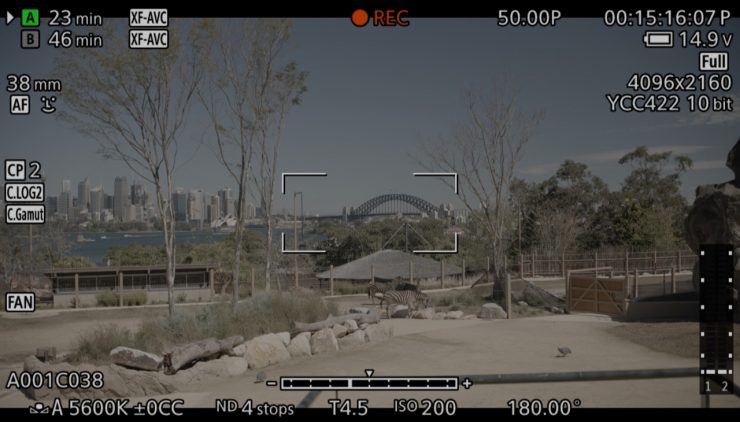
Extender activated with the C500 Mark II
Above you can see the lens on the Canon 500 Mark II in full frame. You need to use the built-in extender to cover the image sensor.
I was surprised it didn’t cover 5K FF on the FX9 but I understand the 17-120mm covers that mode. I took the lens to Sydney Taronga Zoo, Newport Beach, and Sydney Harbour.
What were your overall impressions of the lens after testing it out?
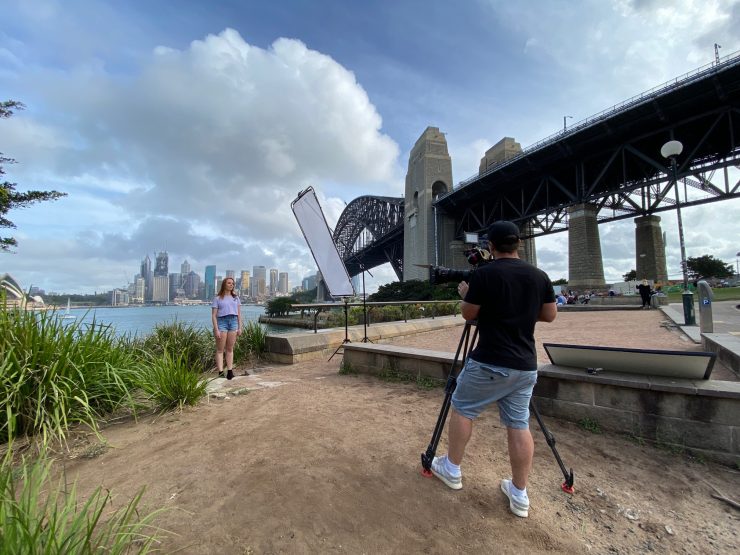
I was impressed with the lens. It’s a good mix for its size and covers a very interesting range, 25-375mm. I can see owner-operators buying this lens, I would certainly like to have it in my kit full time. The lens requires power for DPAF to work. With a Canon camera, you need the Canon EU-V2 Expansion unit @ $1599.00 USD. You also have to have run an external cable down the side of the camera which is not ideal.
What type of shooters do you see using this lens?
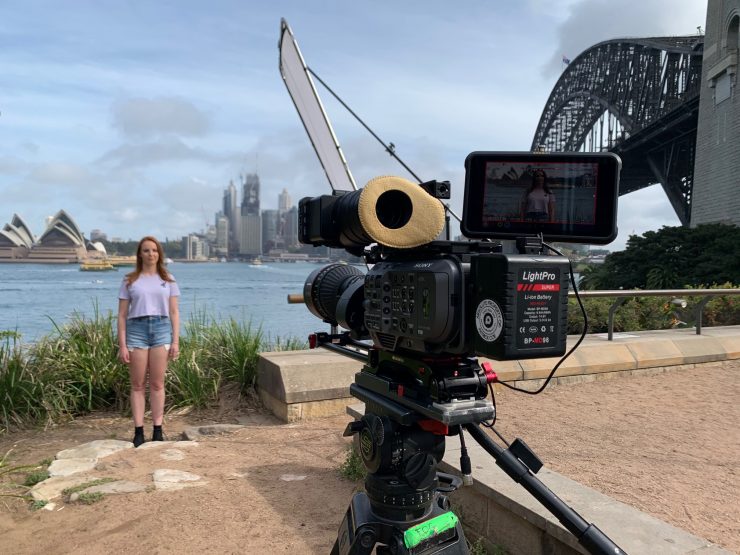
I can see this lens getting used a lot for reality TV. I don’t think it’s long enough for wildlife-documentary work. I found it great for sports but would have liked more length.
I have no doubt this lens will find a home in many productions using large sensor cameras.
Price & Availability
The Canon CINE-SERVO 25-250mm T2.95-3.95 (CN10x25 IAS S) is scheduled to be available later in 2020 for an estimated retail price of $29,999.00 USD.
| PRICE | |
| Canon CINE-SERVO 25-250mm T2.95-3.9 | $29,999 USD |
| Angenieux Optimo Style 25-250mm T3.5 | $41,699 USD |
| Fujinon ZK 25-300mm T3.5 to T3.85 Cabrio Premier | $44,000 USD (servo drive unit is extra) |
| Canon CN-E 30-300mm T2.95-3.7 L S | $44,650 USD |
CINE-SERVO 25-250mm T2.95-3.9 (CN10x25 IAS S) Download
You can download the full specifications of the lens above.

